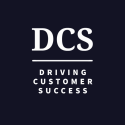How Do You Measure Customer Success? Very Carefully
Here are four approaches that you can use to measure your success and help define the narrative that CX is key to driving the success of your organization.
There is an old joke about marketing that goes something like this: There are 49 CPAs in a room, and a marketing VP walks in, how many marketers are in the room? Fifty!
Why?
Too often the view of marketing is such that anyone can do it.
In the land of CX, we often times find ourselves facing the same challenge.
Sure, you answer the phones, resolve tickets and address escalations, but fundamentally how do you measure your success in a way that changes the narrative — one from being on the defensive to taking a proactive role that ensures funding, thought leadership and a world class approach to driving consistently positive client outcomes.
Here are four approaches that you can use to not only measure your success, but when shared together, can help define the narrative that CX is a key part of driving the go-forward success of your organization.
1. Relationship: Customers’ Willingness to Recommend
Let’s just start with the one measurement that typically elicits the full spectrum of emotion when it comes to the impact your team is having … the Net Promoter Score (NPS).
A customer’s willingness to recommend has been and continues to be one of the biggest indicators of future success, and if the culture is properly aligned, ensures that the entire organization recognizes their role in driving a strong NPS.
It sounds odd that one of the key measurements of success for a CX organization is so heavily weighted on so many others within the enterprise. Think about it, if development roles out new code that is highly defective, and product designs solutions that are not in demand, what does this have to do with how you managed an escalation?
This may strike to the heart of why so many abhor NPS, but it does allow you as the CX leader to understand what is driving the sentiment and provide you with actionable information (not anecdotes) to get your colleagues fully engaged and owning the outcome.
2. Transactional: CX Surveys, and More CX Surveys
While less strategic, transactional measures can readily identify just how well your team is performing in daily customer/client interactions. The key? Survey. Survey. Survey. Not unlike the need to gather data to drive your NPS result, so too must you commit to capturing the data needed to yield strong transactional indicators of success.
Here are three transactional measurements that every CX team should look to:
- CSAT: Customer Satisfaction, unlike NPS, can be either directly solicited (i.e., what was your level of satisfaction with how your issue was resolved?) or can be derived through a series of other questions that yield a score.
- CES: Customer Effort Score is so critical in that it helps understand whether improvements are being made (and felt) that reduces friction in getting resolution to problems.
- TLS: Transactional Level Surveys is just a fancy way of measuring every closed customer/client interaction; surveying on the experience, the result, the rep’s performance, etc.
How you go about capturing the data tends to vary across different companies, but the derived data and how it is used is what is so critically important.
3. Financial: Engaged, Satisfied Customers Only Means Growth
Whether you are in a publicly-traded company or are privately held, your colleagues in finance should be able to provide you with key measures that will help round-out the story of your team’s effectiveness:
- Organic Growth Rate: Growing? Great! It’s not a hard leap to recognize that organic growth within an existing client base can only come about from those that are engaged and satisfied.
- Cross-Sell Rate: Are you seeing sales penetration rates increase by teams cross-selling solutions? Again, this is a great indicator of trust and internal promoters at existing clients.
- Retention Rate: Was the team able to retain a client with a contract extension? Seeing retention rates in the 95%+ range validates their experience; in the land of B2C you can replace with repurchase rates.
4. Employee: Happiness More Important Than Ever
We’ve all long understood and have operated under the notion that a happy employee will drive a happy customer. This has never been more important than now in light of “The Great Resignation” and “Quiet Quitting.” Not only do you have to run the team to ensure engagement, you need to measure the feedback to validate it:
- Employee surveys: Whether you use Glint, or Gallup’s Q12, or something similar, it is critical that you look at both participation rates (how many took the survey) and engagement results (how do they like what they are doing), and compare to the balance of the enterprise.
- Verbatim comments: Much like a customer/client survey, the verbatim comments can shed light on engagement concerns, corporate direction and challenges in the team’s ability to deliver on the promise of a positive client experience.
Data, Data, Data
Not unlike your peers in marketing, the only way to truly demonstrate impact is through the use of data and the corollaries of what is driving success. Anecdotes, biases, and “feelings” aside — the land of CX is all about the science of data and using it to not only justify future investment, but how to leverage the dollars you have today.
So, how do you measure success? Very carefully!
Original post here.

Hakan Ozturk
Founder, theCScafe.com, #1 Weekly Customer Success Newsletter
Hakan Ozturk is a Paris-based Customer Success leader with over 15 years of experience in the computer software industry. Passionate about driving growth and delivering value to strategic customers, Hakan has established himself as a trusted industry expert. As the Founder of The Customer Success Café Newsletter and TopCSjobs.com, Hakan provides valuable industry insights and daily-updated job opportunities worldwide in the field of Customer Success. Connect with Hakan to boost your career in CS and your company’s potential for massive growth.

Leave a Reply